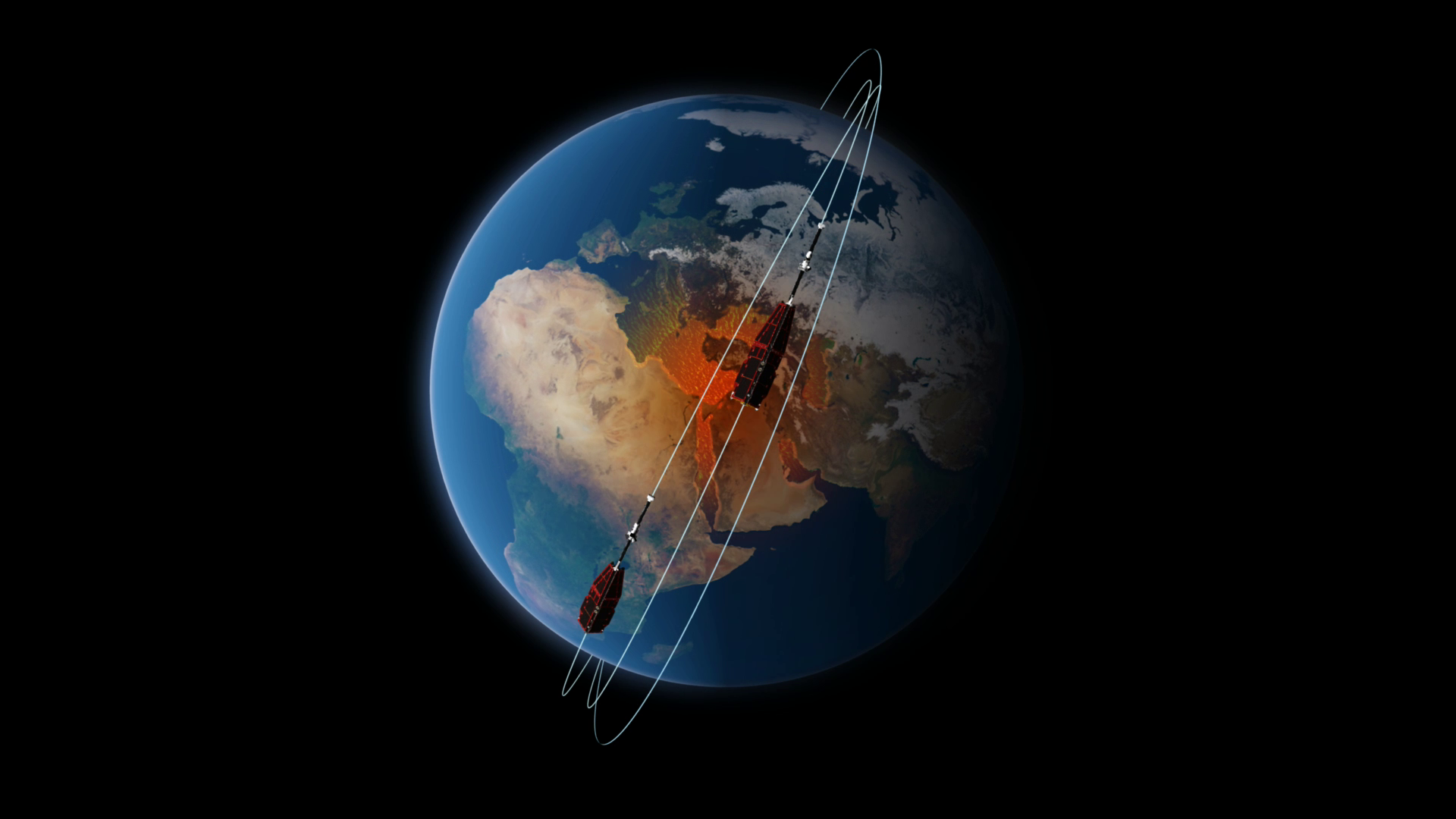Swarm tracks elusive ocean magnetism
The magnetic field is arguably one of the most mysterious features of our planet. ESA’s Swarm mission is continually yielding more insight into how our protective shield is generated, how it behaves and how it is changing. Adding yet another string to its bow, Swarm is now tracking changes in the magnetic field produced in the oceans in more detail that ever before.
New results from the trio of Swarm satellites are wowing this year’s European Geosciences Union meeting in Vienna, Austria. This week-long event draws scientists from all over the world to share discoveries about our planet.
Today, the spotlight is firmly on Swarm, and a particular highlight is how the mission is tracking one of Earth’s more elusive sources of magnetism.
While the magnetic field is created largely by an ocean of superheated, swirling liquid iron in the planet’s outer core, other factors, like magnetised rocks in the crust and the flow of the ocean, also affect the field.
We wouldn’t normally think of seawater as being a source of magnetism, but it does make a tiny contribution.


Access the video
When salty ocean water flows through Earth’s magnetic field, an electric current is generated, and this, in turn, induces a magnetic signal.
However, the field generated by tides is tiny and extremely difficult to measure – but Swarm has done just this in remarkable detail.
The animation above shows how the tidal magnetic signal changes over 24 hours.
Nils Olsen, from the Technical University of Denmark, said, “We have used Swarm to measure the magnetic signals of tides from the ocean surface to the seabed, which gives us a truly global picture of how the ocean flows at all depths – and this is new.
“Since oceans absorb heat from the air, tracking how this heat is being distributed and stored, particularly at depth, is important for understanding our changing climate.
“In addition, because this tidal magnetic signal also induces a weak magnetic response deep under the seabed, these results will be used to learn more about the electrical properties of Earth’s lithosphere and upper mantle.”
As well as shedding this new light on magnetic tides, Swarm has also yielded a new map of the magnetic field generated by Earth’s crust. Read more here: Magnetic lithosphere detailed

Download the comic: Scanning Earth with the tides














 Germany
Germany
 Austria
Austria
 Belgium
Belgium
 Denmark
Denmark
 Spain
Spain
 Estonia
Estonia
 Finland
Finland
 France
France
 Greece
Greece
 Hungary
Hungary
 Ireland
Ireland
 Italy
Italy
 Luxembourg
Luxembourg
 Norway
Norway
 The Netherlands
The Netherlands
 Poland
Poland
 Portugal
Portugal
 Czechia
Czechia
 Romania
Romania
 United Kingdom
United Kingdom
 Slovenia
Slovenia
 Sweden
Sweden
 Switzerland
Switzerland






























